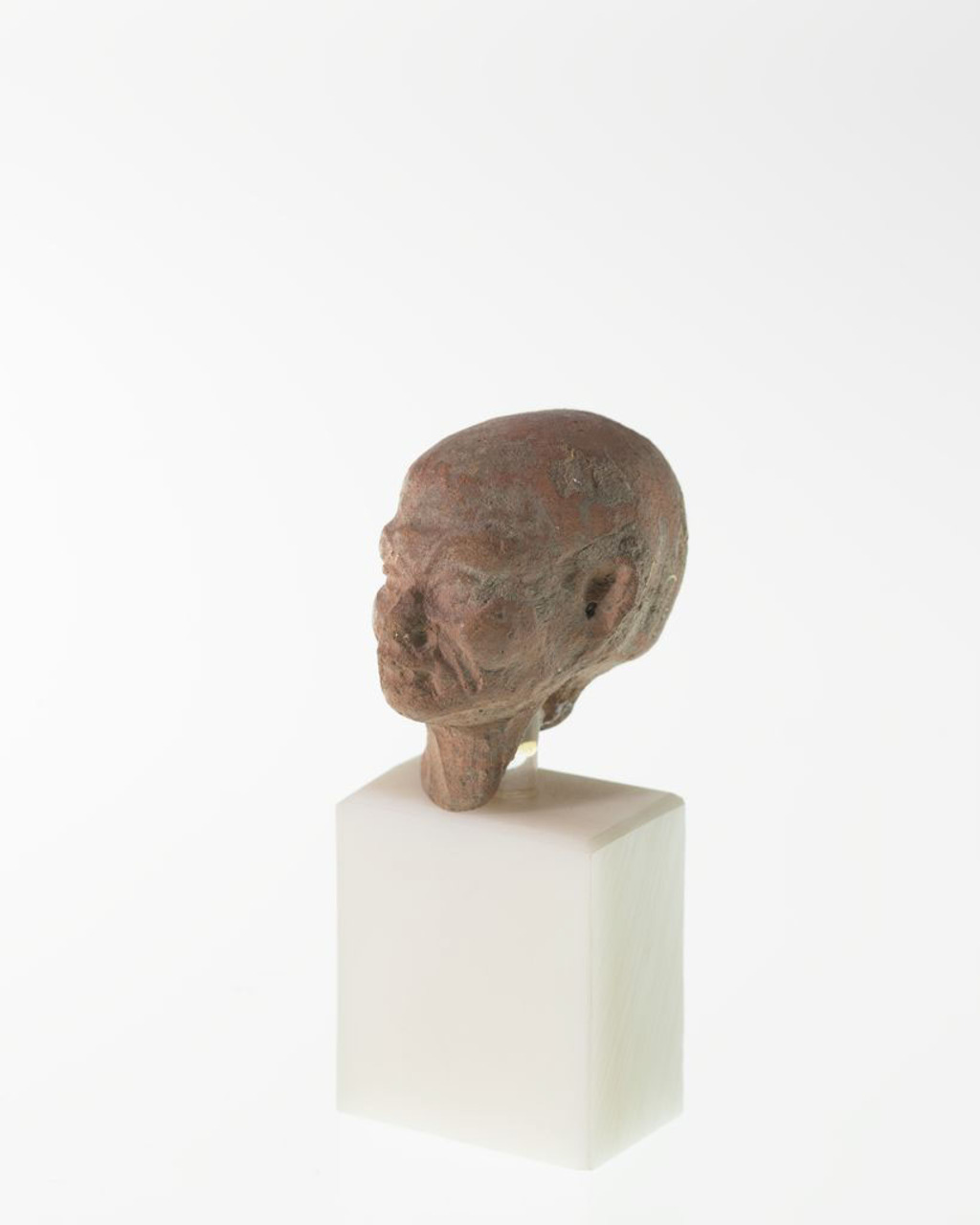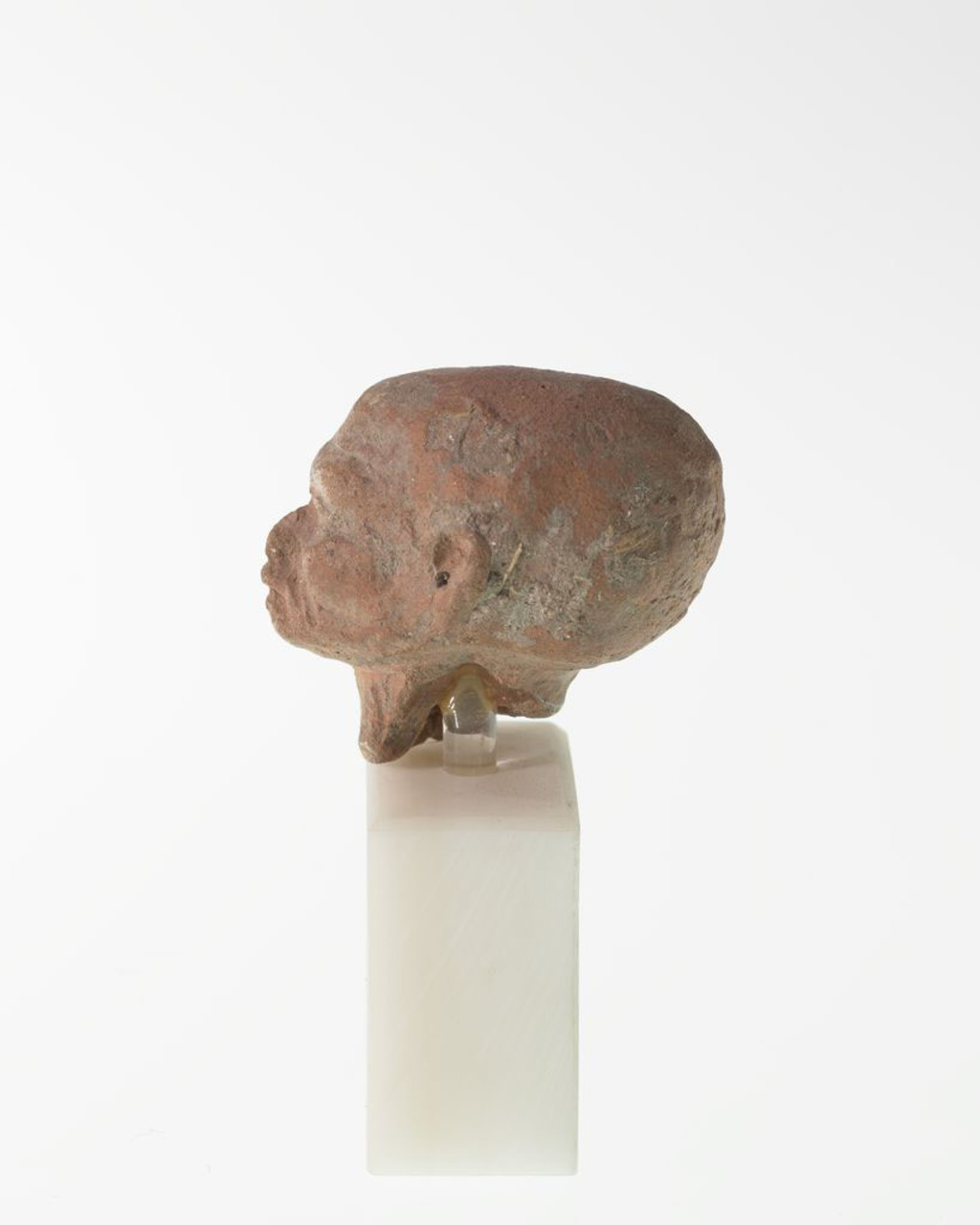This small terracotta head, now broken at the base of the neck, once belonged to a larger figure representing an old man. He is bald and his facial features are soft and plump. The head features exaggerated eyes, fleshy lips in a slight smile, and a wide nose. Age lines appear at his forehead and on either side of his mouth. Additionally, creases along the thin neck of the figure indicate folds of loose skin. The ears are created with pinched clay that is flipped outward toward the front of the figure. The eyes are only open in slits with puffy, swollen eye lids, which may represent blindness. During the Hellenistic and Roman periods (300 BCE–300 CE) when terracotta figures such as this were produced, there was an interest in depicting the human condition, including works emphasizing old age, infirmities, or disabilities. The exact function of these objects is not known, but they could have served as a charm to ward away such conditions or possibly as a votive for healing.



